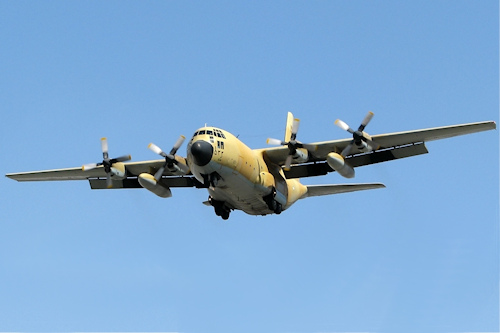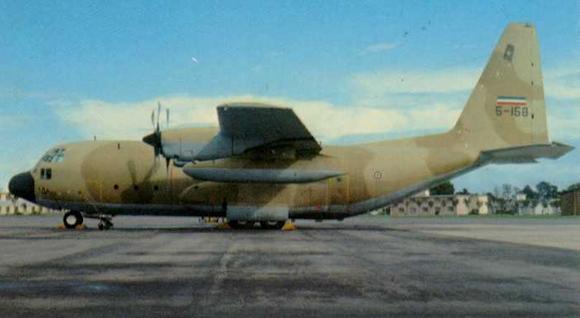For decades the Air Force of the Islamic Republic of Iran (IRIAF) as well as the other air arms of the Armed Forces and the Pasdaran of the Persian state have been a subject of extreme interest both for experts and for enthusiasts of the aeronautical sector in light of their troubled and largely still obscure history and of the variegated group of fixed-wing and rotary-wing aircraft of American, Soviet / Russian, Chinese, French and local origin which constitute both the front line combatants and the support services. Even if the lion's share of the aforementioned attentions is undoubtedly destined for the fighter-bomber departments, we must not forget that the support services have also had the opportunity to play a very important role in Iranian aeronautical history in recent decades. One of the least known sectors in this regard is that relating to aircraft belonging to the reconnaissance squadron and electronic warfare, the dark and all too often forgotten heroes of the Iranian skies.
The history of this elite department begins during the 60s and 70s of the twentieth century when the CIA, the NSA, the USAF, the SAVAK (the Iranian secret police at the time) and the IIAF (acronym which stands for Imperial Iranian Air Force, the Iranian Air Force of the time of Shah Mohammad Reza Palhavi) began a secret espionage program called "Project Dark Gene" directed mainly towards the Soviet Union and, secondarily, towards other countries in the Middle East (for example the Iraq, but also Israel, not so firmly in the American orbit at the time).
 An offshoot of this program, called "Project Ibex", worth 500 million dollars at the time, envisaged the construction of an integrated network of ground-based listening stations dedicated to SIGINT collection supported by the creation of an expressly dedicated air department to carry out electronic warfare (EW) missions. Based on this directive, the IIAF made the decision to purchase 4 Lockheed C-130H (opening photo) and 2 Boeing 707-3J9C, immediately joined by 2 Rockwell Checkout 690A (photo) formally under the control of the IIAA (acronym for Imperial Iranian Army Aviation, the Air Force of the Land Army at the time of the monarchy) but actually permanently assigned to the nascent squadron. All of these aircraft were modified and adapted to the new role by E-Systems' Greenville Division, in the United States of America.
An offshoot of this program, called "Project Ibex", worth 500 million dollars at the time, envisaged the construction of an integrated network of ground-based listening stations dedicated to SIGINT collection supported by the creation of an expressly dedicated air department to carry out electronic warfare (EW) missions. Based on this directive, the IIAF made the decision to purchase 4 Lockheed C-130H (opening photo) and 2 Boeing 707-3J9C, immediately joined by 2 Rockwell Checkout 690A (photo) formally under the control of the IIAA (acronym for Imperial Iranian Army Aviation, the Air Force of the Land Army at the time of the monarchy) but actually permanently assigned to the nascent squadron. All of these aircraft were modified and adapted to the new role by E-Systems' Greenville Division, in the United States of America.
Although it is still not entirely clear today what types of electronic equipment were installed by the Americans on board those aircraft, it seems that, at least as regards the C-130H (subsequently unofficially renamed RC-130H or "Khoofash", which in Farsi means "bat"), they have been equipped with a new navigation platform, a number of antennas and detection systems installed around the fuselage and wings and a console suitable to accommodate 13 operators. On the other hand, it has not been possible for the author of this article to find up to now any type of information relating to the modifications made to the Boeing 707-3J9C and the Rockwell Checkout 690A.
By 1975 the squadron was declared operational and, at the same time, reconnaissance flights began, mainly starting from Tactical Fighter Base 1 (TFB1) of Tehran-Mehrabad (where the squadron was based), from Tactical Fighter Base 2 (TFB2) of Tabriz and from Tactical Fighter Base 3 (TFB3) by Hamedan.

In the following years, until the outbreak of the Khomeinist Revolution in 1979, the aircraft of the EW squadron flew constantly, mainly along the borders that Iran shared with the Soviet Union and Iraq, intercepting telecommunications and gathering intelligence data mainly on the emissions of radar and anti-aircraft defense systems as well as a plurality of secondary missions.
The 1979 Revolution brought a temporary halt to operations, but with the deterioration of relations with the Iraqi neighbor over the next year, eventually leading to the outbreak of the Iran-Iraq War (September 22, 1980), aircraft from the squadron EW flew again more than before.
During the 8 years of grueling conflict (the longest conventional warfare of the 25th century) all of the aircraft mentioned above played a fundamental role by intercepting and filtering Iraqi military communications. Such was their effectiveness that the Iraqi Air Force (IrAF) organized real "hunting parties" even sending their own Mig-130 interceptors into the depths in an attempt to shoot down the elusive Iranian EW aircraft. Although on one of these occasions an Iranian C-130 was actually shot down, it was later discovered that it was a simple transport, and not an RC-XNUMXH as declared by the Iraqis, therefore at the end of the war the EW squadron could boast of having gone through the conflict with its strength intact.
Still today based at TFB1 in Tehran-Mehrabad, over the years the aircraft assigned to the squadron (in particular the "Khoofash") have occasionally also been assigned to other roles, such as for example tactical transport, however the original EW vocation has remained and still today they continue to fly intensively (especially at night), mainly along the Iranian borders and over the last decade also over the skies of Iraq and Syria in support of information gathering and electronic warfare missions carried out both by the Armies and by the Iranian Pasdaran and by their allied forces in the operational theaters of the "Greater Middle East", even if, understandably, the details of their operations represent one of the best kept secrets of the Persian military apparatus, so they are not at all easy to to map.
Photo: IIAF / web












